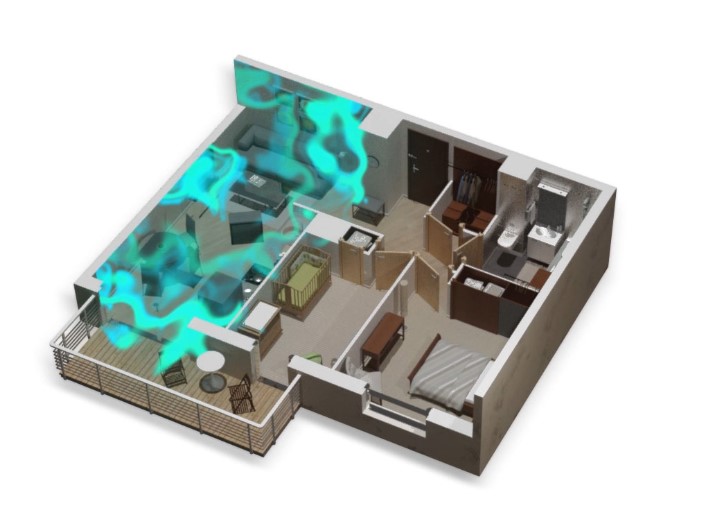Unless you are involved in the design process of buildings – or really any space occupied by humans – it’s likely you’re underestimating just how much thought goes into every little aspect of a design. There are so many factors that a team of architects and engineers must take into account before the actual construction process can even think about getting off the ground. Things we generally take for granted (unless done improperly, of course) in day-to-day life are thought out meticulously through the design phase of a project, and beyond. In this age of rapidly developing technology, it comes as no surprise that new tools are being developed to better consider these factors. Recently a new one hit the market with Treble Technologies officially launching their new cloud-based sound simulation platform.
This software platform is made for architects and engineers, allowing them to experience – both visually and auditorily – how the acoustics of a design will function in a virtual space. The Iceland-based company leans on their proprietary sound simulation technology which can then be integrated into a 3D model to visually represent how sound will or will not travel in a given space. While the platform had previously been in beta with a handful of firms having early access to the technology, the company is now launching it with a wide release open to everyone. Users of the platform can view their models on a PC or via a virtual reality (VR) headset.
One of the key trends in this current age of AEC technology is the ability to seamlessly integrate with other, established platforms. In the past, platforms had been too siloed, but largely driven by user feedback a more integrated ecosystem is being established. Treble’s sound simulation platform follows that model, with integrations available for some of the major modeling platforms like SketchUp Pro, Rhino, and Revit. Treble has a plug-in with all of those solutions, allowing for their simulation to be integrated within an established model created on one of these other platforms. In addition to the visualization piece, users can also simulate the auditory experience with the ability to change factors like ceilings and where in the space a person is, as can be seen in the video below.
Speaking of the simulation, this is based on their own wave-based simulation platform. Now, they are certainly not the first to create a process for simulating sounds within a given space, but most of those simulations are based upon a hybrid geometrical acoustics approach, but Treble combines that approach with a wave-based one. Essentially, the former can be done more quickly, and generally works fine in large spaces with complicated shapes at high frequency, but the latter does better with low frequencies and individual rooms. Treble believes they get the best of both worlds with their methodology and are able to address every potential user’s needs. While this platform currently puts most of its focus into built environments, the company is planning on developing interfaces for sound simulation in automobiles as well.
For architects and engineers, and AEC projects generally, this type of product could be a game-changer. Sound is a massive consideration in any building, and it’s one of the biggest environmental and human health issues around the globe. In fact, the World Health Organization (WHO) has called noise the world’s second largest environmental cause of health problems, trailing only air pollution. The point is, determining how sound is going to travel, and in turn how that will affect people both within a given space and outside of it, is crucial for designing any building people will occupy for significant amounts of time.
There is also a more traditional environmental benefit to this kind of solution, and one that applies to many of the new AEC technology coming out in recent years. That is the ability to detect potential clashes and problems before a project actually starts. Without a sound simulation platform, noise issues may not be detected until after a project’s completion, leading to both costly and environmentally damaging renovation, something that can be avoided by visualizing and otherwise experiencing a soundscape virtually prior to construction.
Treble is still a young company, having been founded in 2020, and there is certainly more development that will come with this project, including the potential of adding more machine learning techniques into the workflow. This initial wide release is a step towards a more pleasant experience for everyone and more efficient and effective projects for AEC professionals.
In a statement to AEC Magazine, Treble CEO and co-founder Finnur Pind said, “For too long, engineers and designers have lacked the necessary tools to harness the power of sound, and design great sound experiences. With Treble, users can now visualize how their designs will look, as well as listen to how the acoustics will manifest, and do so in an efficient manner.”






